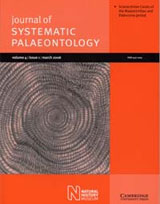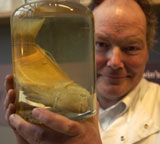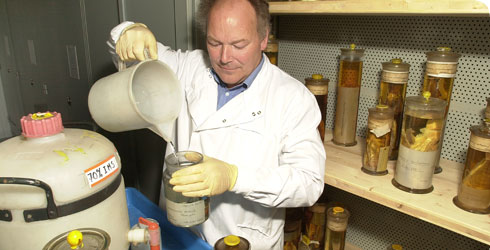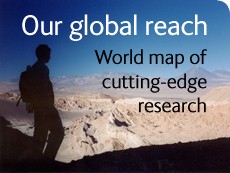Science methods
Science is a powerful technique for understanding the world around us. Across all the sciences, there is a process which scientists follow.
Hypotheses
Firstly, scientists formulate a hypothesis - an idea about how or why something is the way it is. Then, they devise a series of experiments to test whether the hypothesis is true or false. If it is false, a new hypothesis is formulated to offer an alternative explanation.

A published scientific paper
If the hypothesis seems to be true, which means that the data supports the scientist's idea, then other people must test the hypothesis. They may do this in the same way or using a different experiment.
Each experiment must be repeatable. Only when it has passed many tests does a hypothesis about the world become accepted by scientists.
Falsifiability
Falsifiability means that a hypothesis is only true as long as no evidence has been found to disprove it. A proper scientific hypothesis must be capable of being disproved.
This means that scientific theories are never absolutely proven, but the more evidence we have to support them, the more sure we are they are true.
Hypotheses are often reviewed, and may be discarded, when new evidence is found. Of course, the process involves debate and counter argument as new struggles against old. Few experiments can be as clear-cut as we would like, and it takes time to build up conclusive evidence.
For scientists at the Museum, evidence for hypotheses usually come from examining specimens, which are re-examined constantly to verify or disprove new theories.
Asking more questions
Research is ongoing. Finding the answer to one question usually reveals more questions, and there are always more questions than researchers to study them. In this respect, scientific research is never really 'completed'.
There are few projects that answer one question without suggesting several more...
Scientists have to apply for money for their research. They may have to prove why they need to carry out a particular piece of research to a charity or university who will provide funds. There is heavy competition for funding.

The Journal of Systematic Palaeontology is published by the Natural History Museum
Sharing skills
Research is a highly creative process, in which new ideas are always needed. Working in teams, and discussing research with others, help provide these ideas.
For example, Crick, Franklin, Watson and Wilkins worked out the structure of DNA in the 1950s as a team.
The wide-ranging expertise of researchers at the Museum allows many questions to be explored. Email, the internet and travel ensure that this debate involves research groups across the world.
The peer review process
When a research project has ended, its results must be communicated so others can build upon its conclusions. There are thousands of journals published monthly.
Peer-reviewed journals are the backbone of science. The scientific articles published there have all been checked for reliability by other groups of scientists.
Communicating with the public

Oliver Crimmen, Curator of Fish, showing a parrotfish, Pseudoscarus lepidus, to Museum visitors
Finally, science must be communicated to the wider society.
Researchers work with other communicators to ensure accuracy. For example, scientists help create exhibitions, documentaries, answer journalists' enquiries and publish research papers on the internet.
Scientists also communicate directly. Through initiatives such as science presentations and public discussions at the Darwin Centre, and events such as National Science Week, the public can find out more about research projects.

